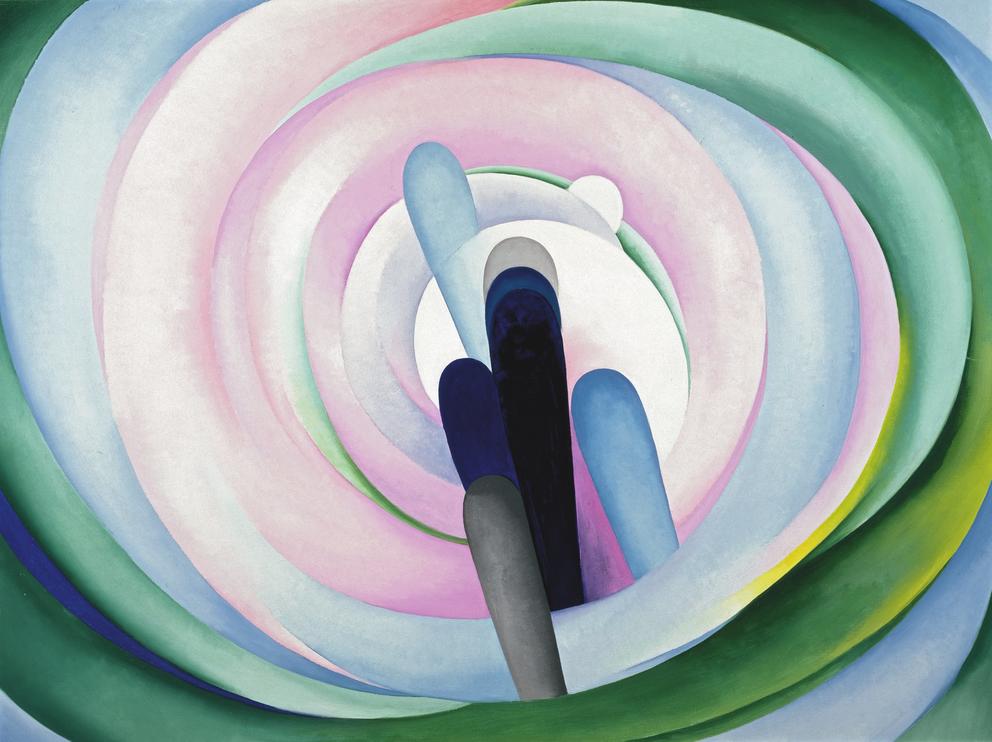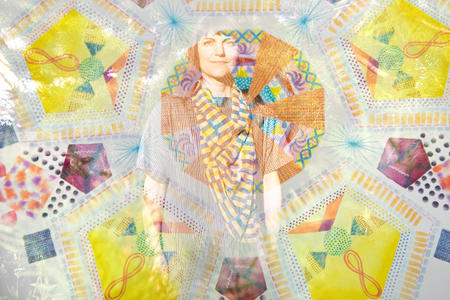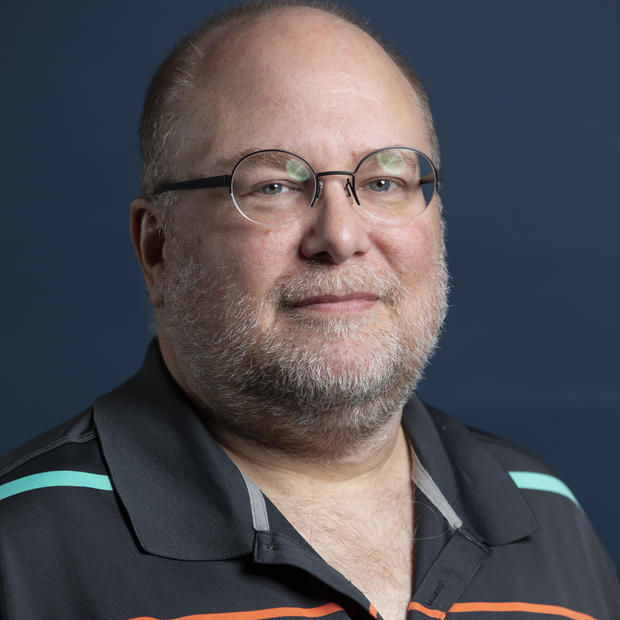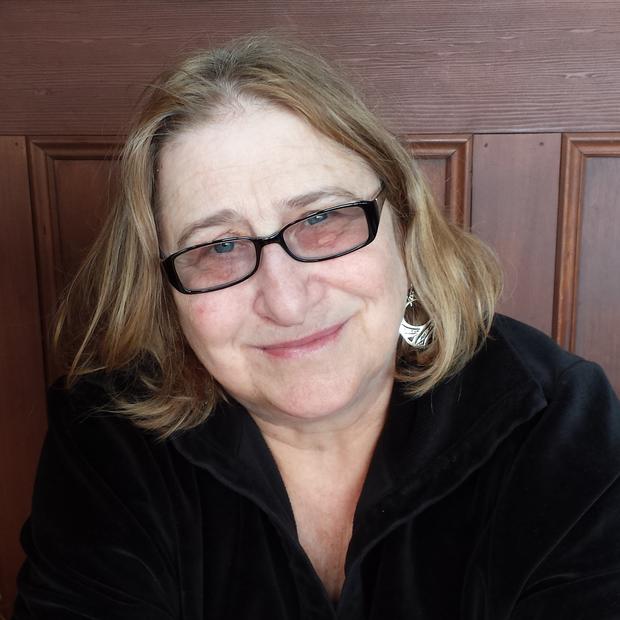John Akomfrah: Future History
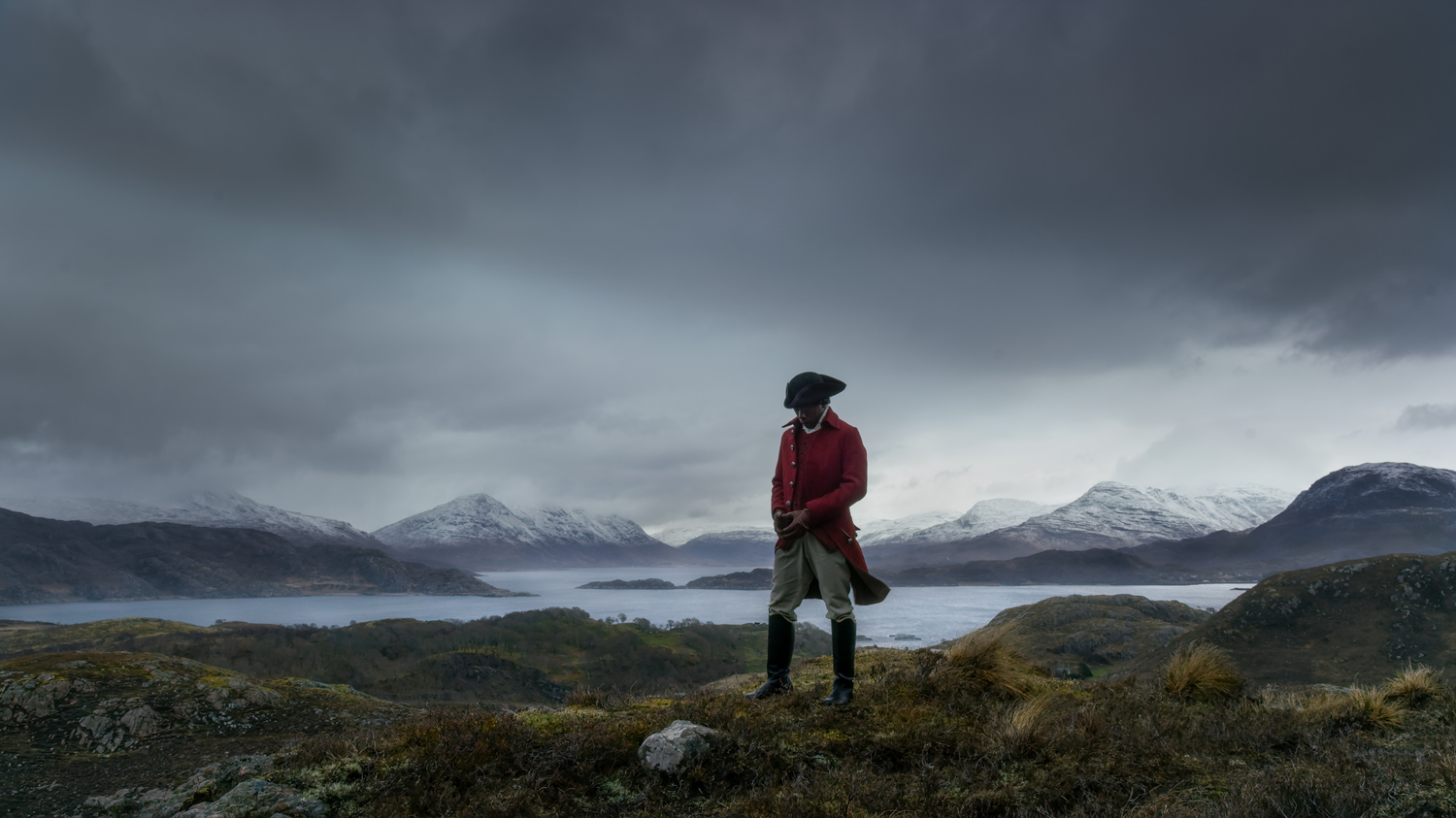
Dolphins flit in and out of the water as seagulls float on the wind. A ship weathers a treacherous storm. Images of a lost-looking polar bear alternate with archival footage of another getting skinned. Though John Akomfrah’s three-screen video installation “Vertigo Sea” (2015) features breathtaking nature shots, his research-heavy work is something other than documentary. It’s more collage than straightforward narrative, more meditation than explanation. Case in point: “Vertigo Sea” debuted in 2015 at the Venice Biennial, the prestigious international art exhibit.
John Akomfrah: Future History — Seattle Art Museum’s first special exhibition dedicated to video art — zooms in on three major video works by the British artist-filmmaker, with “Vertigo Sea” as the center- and masterpiece. As images of and references to the Zong massacre (a mass killing of enslaved people at sea), billowing sails and Vietnamese migrants fleeing their country on a boat during the war fly by, it’s hard not to think how humans can be as treacherous as the ocean. –M.V.S.
If you go: John Akomfrah: Future History at Seattle Art Museum, March 5 - May 3. (Free-$29.99) Community opening night featuring art-making, music, and free entry to the show, 5-9 p.m. March 5.
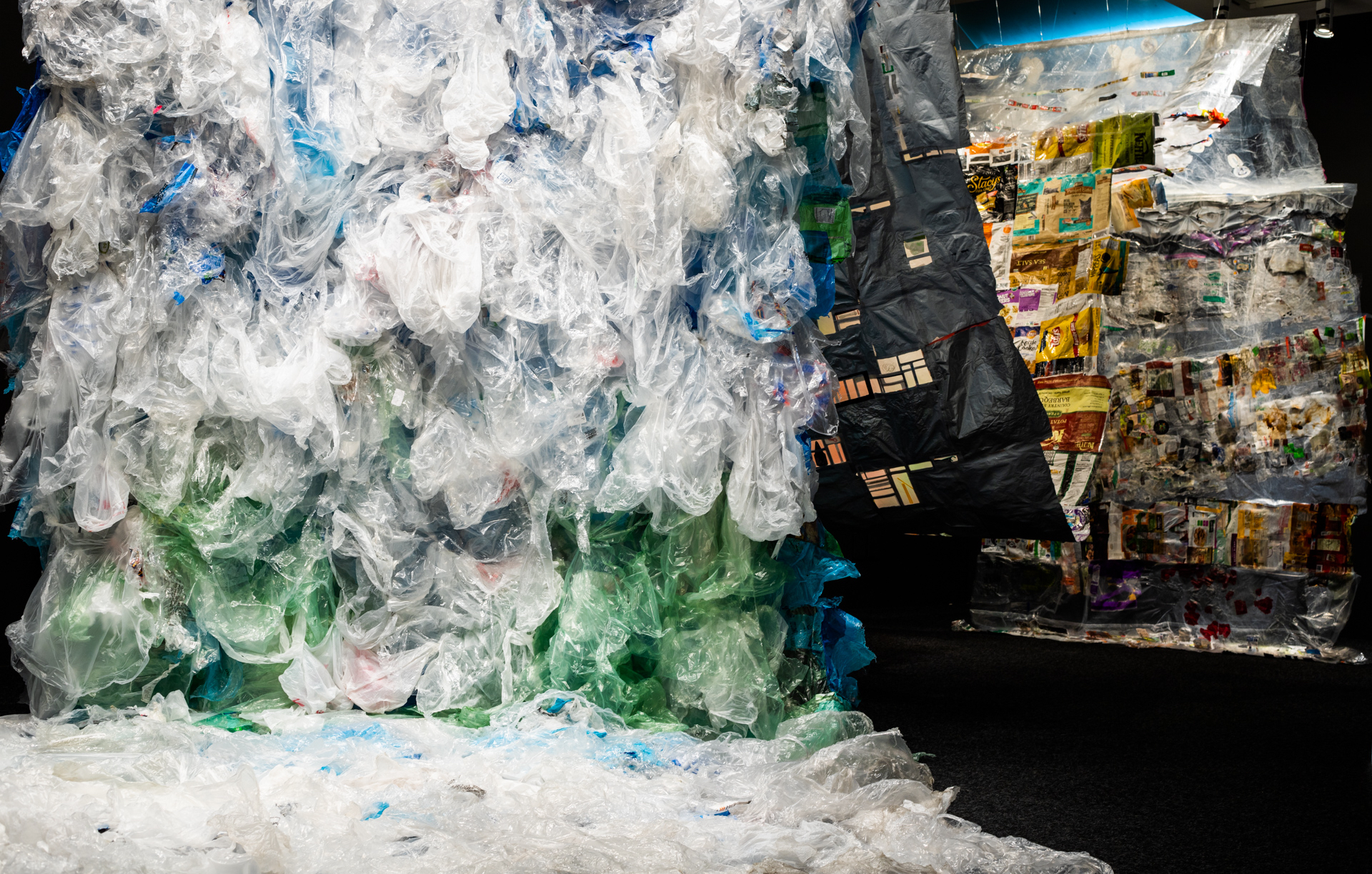
Hidden in Plain Sight
Metaphorically speaking, a tidal wave of trash is coming for us all. Nowhere is that more literally apparent than at Bellevue Arts Museum, where Seattle artist Maria Phillips has created a massive wave out of the nonrecyclable trash generated by her family of four over the course of a year. The undulating installation takes up a whole gallery and contains a great many chip bags — some in giant Costco size (she has two teens she says are “definitely in crap food mode”). The whole thing crashes forward into a waterfall of plastic bags that’s actually quite beautiful, if dire. The title of the show is Hidden in Plain Sight, but Phillips jokes that this piece is her “wall of shame.” And that’s the point — coming to terms with our own massive waste, even when we’re eating organic chickpea snacks and cauliflower pizza crust. In person, Phillips is funny and frank, and as manager of the Recology Cleanscapes artist in residence program, deeply committed to changing our trashy habits. Also in the show are washed-up pastel plastics she has collected on various beaches, displayed like jewels in clear takeout boxes. (Some have merged with mussels and barnacles to form an entirely new evolution of creatures.) Suspended at the entrance is a giant, perpetually spinning sphere made of chip bags and juice boxes turned silver-side out. Somehow the earth keeps turning, even as we cover it in cast-offs. –B.D.
If you go: Hidden in Plain Sight at Bellevue Arts Museum. "Free First Friday" is Mar. 6. Exhibit runs through Mar. 8. ($15)
Georgia O’Keeffe: Abstract Variations
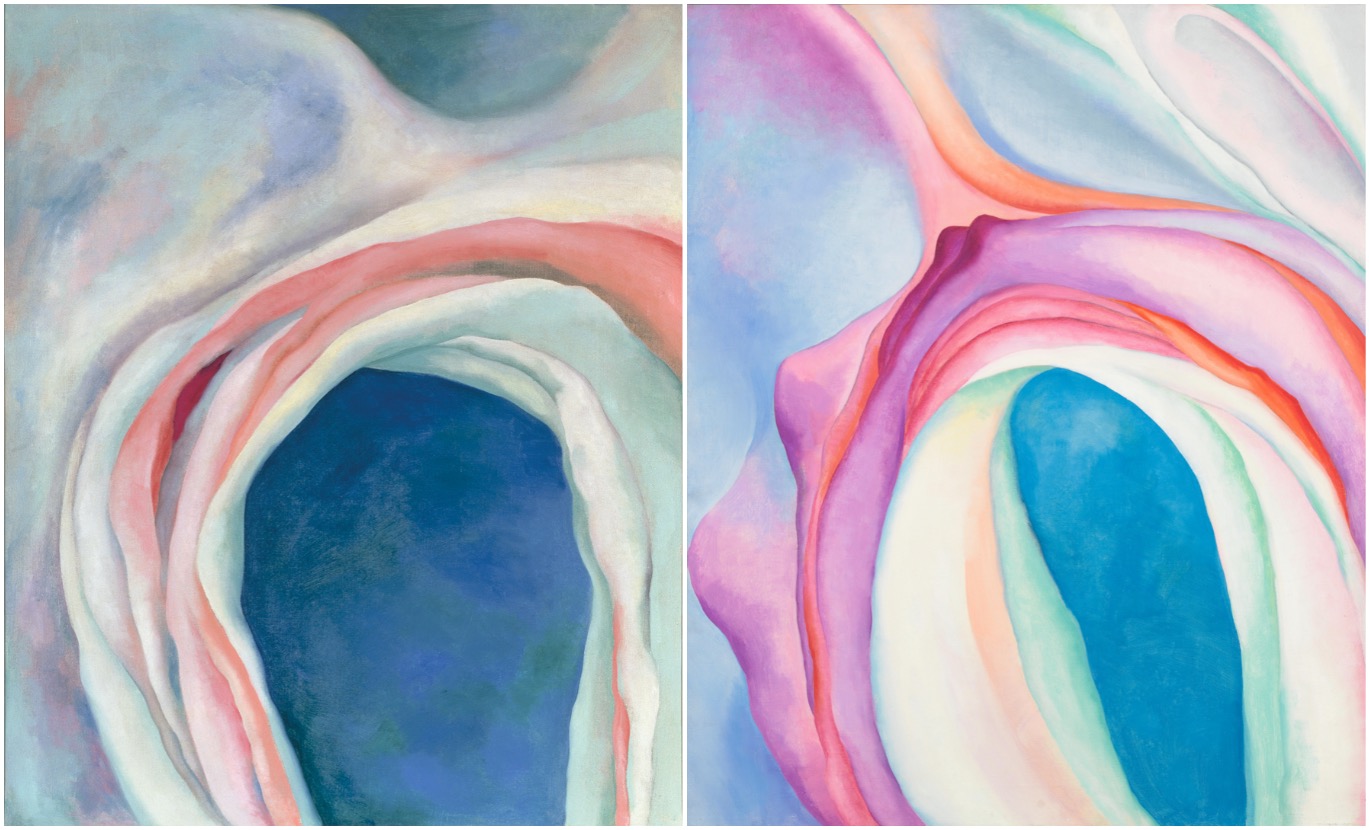
“When people read erotic symbols in my paintings, they're really talking about their own affairs.” That's American painter Georgia O’Keeffe (1887-1986), rebutting art critics and others (including her own husband, photographer and art dealer Alfred Stieglitz) who couldn’t resist a Freudian reading of her pastel-tinted paintings of abstracted flowers, fruit and arid landscapes. Despite her resistance — and pioneering stature in art history — O’Keeffe’s oeuvre is often still reduced to vaginas and flowers. But, as Georgia O’Keeffe: Abstract Variations, a compact but effective exhibition at the Seattle Art Museum demonstrates, the artist's pioneering role lay in seeking the limits of representation — and finding a lyrical abstraction in a style completely her own. Notable: Music, Pink and Blue, No. 1 (1918), recently gifted to Seattle Art Museum by the late Barney A. Ebsworth, hangs side-by-side with Music, Pink and Blue, No. 2 (1918), a loan from New York’s Whitney Museum of American Art. Finally, the lyrical siblings, No. 2 even more colorful than its predecessor, can duet again. –M.V.S.
If you go: Georgia O’Keeffe: Abstract Variations at Seattle Art Museum, Mar. 5 – June 28. (Free-$29.99) Admission to Abstract Variations will also get you into SAM’s special exhibition, John Akomfrah: Future History (see listing above.)
Bill Frisell
Seattle guitar legend Bill Frisell released a new album in October called Harmony. The title recalls Southern Harmony, published in 1835, a songbook of traditional hymns reaching back to Colonial days and an invaluable document of what America was singing in church and at social gatherings. (When you hear the phrase “roots music,” this is one of the roots being referred to.) Naturally, Frisell’s album also explores various facets of Americana, from Stephen Foster through Pete Seeger up to Billy Strayhorn, Lerner & Loewe and Elvis Costello, and includes several originals. His collaborators on disc and in Thursday’s appearance are the vocal trio of Petra Haden, Hank Roberts (doubling on cello) and Luke Bergman (baritone guitar); their close-harmony performances (sometimes a cappella, with Frisell leaving them the spotlight) hearken back to the hymn sound and style of centuries earlier. –G.B.
If you go: Bill Frisell at The Moore Theatre, March 5 at 7:30 p.m. ($32.50-$52.50)
Conrad Tao: American Rage
People have been arguing for centuries over the “representationality” of music — the ability of organized sound to “mean” ideas in the way words or images do. But one thing sounds can clearly represent is, of course, other sounds. This is the strategy American composer/pianist Frederic Rzewski used when he turned to embrace overtly political, overtly leftist themes in his music. “Which Side Are You On” and “Winnsboro Cotton Mill Blues,” two of Rzewski’s Four North American Ballads (1978-79) for piano, evoke the struggles of the labor movement in two ways: by quoting a protest song (written during coal-miners’ strikes in 1931 in Kentucky) and by imitating the relentless and deafening clatter of factory machinery to create one of the most thrilling piano pieces ever written. Hear these this weekend as another composer/pianist, Conrad Tao, plays them in Benaroya Hall’s new Octave 9 concert space. Tao will also bring Julia Wolfe’s Compassion, a “sustained scream,” as Tao calls it, composed just months after — and, in fact, blocks away from — the 9/11 catastrophe. Fourth on the bill is Aaron Copland’s Piano Sonata, which may seem like the odd work out here among pieces that wear their titles on their sleeves, but the connection lies in the backstory: Copland dedicated the 1941 sonata to playwright Clifford Odets, the working-class bard of the American stage. All four of these works appear on Tao’s recent album American Rage, as well as in this intellectual concert by the same name. –G.B.
If you go: American Rage at Octave 9, March 6 at 8 p.m. ($35)
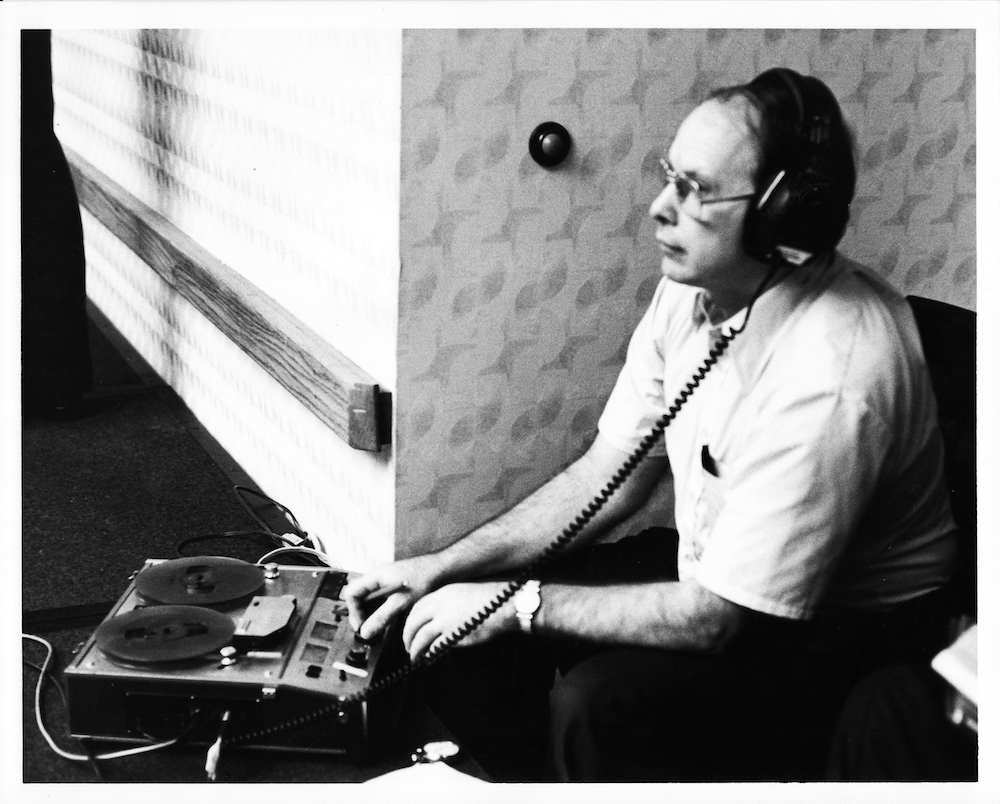
Kearney Barton: Architect of Northwest Sound
When legendary Seattle recording engineer Kearney Barton died in 2012, he left behind a musical treasure trove: 7,000 reel-to-reel tapes piled up in a famously cluttered studio. Embedded in those ribbons of old-school recordings was a massive archive of Seattle sound, which Barton captured in his studio over a 50-year career. Former Sub Pop employee Dan Trager (a protege of Barton’s) worked with the University of Washington and Light in the Attic Records to compile a small sampling of his life’s work — which is now available in the form of a CD, vinyl record and mp3. Kearney Barton: Architect of Northwest Sound is a remarkable document, revealing the vast influence of a creative person who remained largely behind the scenes. The 29 tracks reflect a wide range of genres, but also Barton’s signature style. “I got a lot of punch and presence,” he recalled in a 2011 interview. “It had an intensity that you didn’t have on a lot of records.” Featured bands include the Beacon Hill First Baptist Choir, The Sonics, The Black on White Affair, The Wailers, and Ann Wilson, plus a few tracks in which Barton himself makes introductions in a very professional radio voice. This weekend, Light in the Attic is throwing a record release party at the KEXP gathering space, where DJ Greg Vandy will pay homage by spinning Barton’s tunes. –B.D.
If you go: KEXP Gathering Space at Seattle Center, Mar. 7 from 2-4 p.m. (Free)
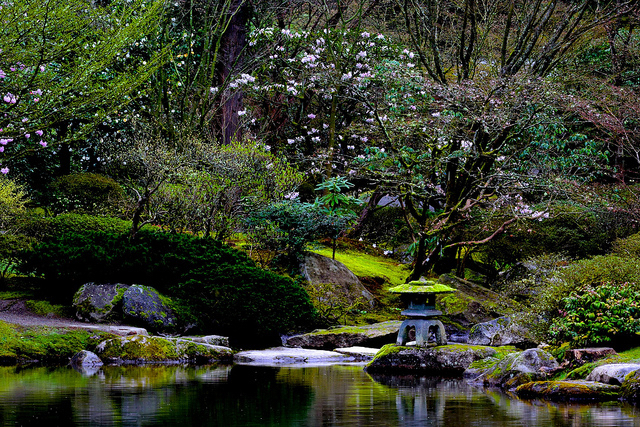
Climate Change Arts Festival
What better time to talk about the environment than when strolling through an urban oasis of traditional horticultural design? This weekend the Seattle Japanese Garden is joining forces with organizations including the Seattle Club, Zero Hour and Seattle Repertory Theater to offer a day of arts and crafts, live music and informal readings of plays and poetry — all geared toward raising awareness regarding the climate crisis facing our planet. A kid-friendly event, the idea is to spark family conversations about protecting the Earth. There will be plenty of information on local opportunities for both grown-ups and youths to engage with and support the cause, all in a sylvan outdoor setting. –M.B.
If you go: Climate Change Arts Festival at the Seattle Japanese Garden, March 7, 11a.m.-2 p.m. (Free with garden admission, $4-$6)
Balkan Night Northwest
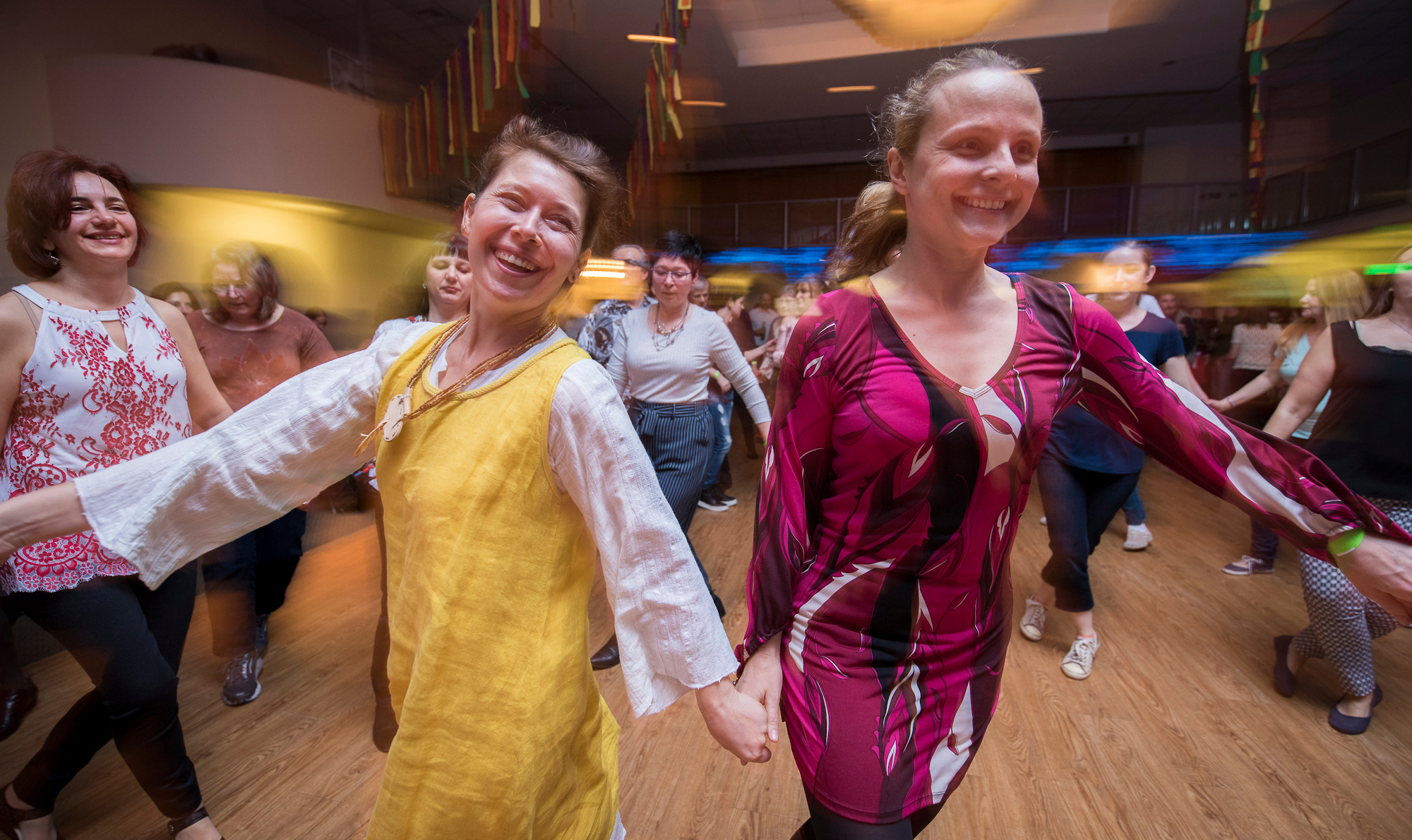
[UPDATE: This event has been canceled as a coronavirus precaution.] The Balkans have a long history of shifting geography, with different countries considered "Balkan" during different political eras. But what has long been clearly defined is the region's propensity for delicious food and excellent music, and you can indulge in both at Balkan Night Northwest. This year’s edition of the biggest Balkan festival on the West Coast welcomes saxophonist Yuri Yunakov, a legend of Bulgarian-Roma wedding music, as headliner. Also on deck: Greek and Croatian food and a bagpipe-scored procession of kukeri — giant, costumed characters from traditional Balkan lore. Three stages spread across Montlake’s St. Demetrios Hall offer a buffet of live music, from Macedonian Roma pop to Bosnian soul music, plus dance-inducing tunes from the Greek Islands, southeast European party music and even pontic Greek lyra and percussion by (who else?) Gin-n-Pontic. –M.V.S.
If you go: Balkan Night Northwest at Saint Demetrios Hall, Mar. 7 from 5 p.m.-midnight. ($10-$29.99)
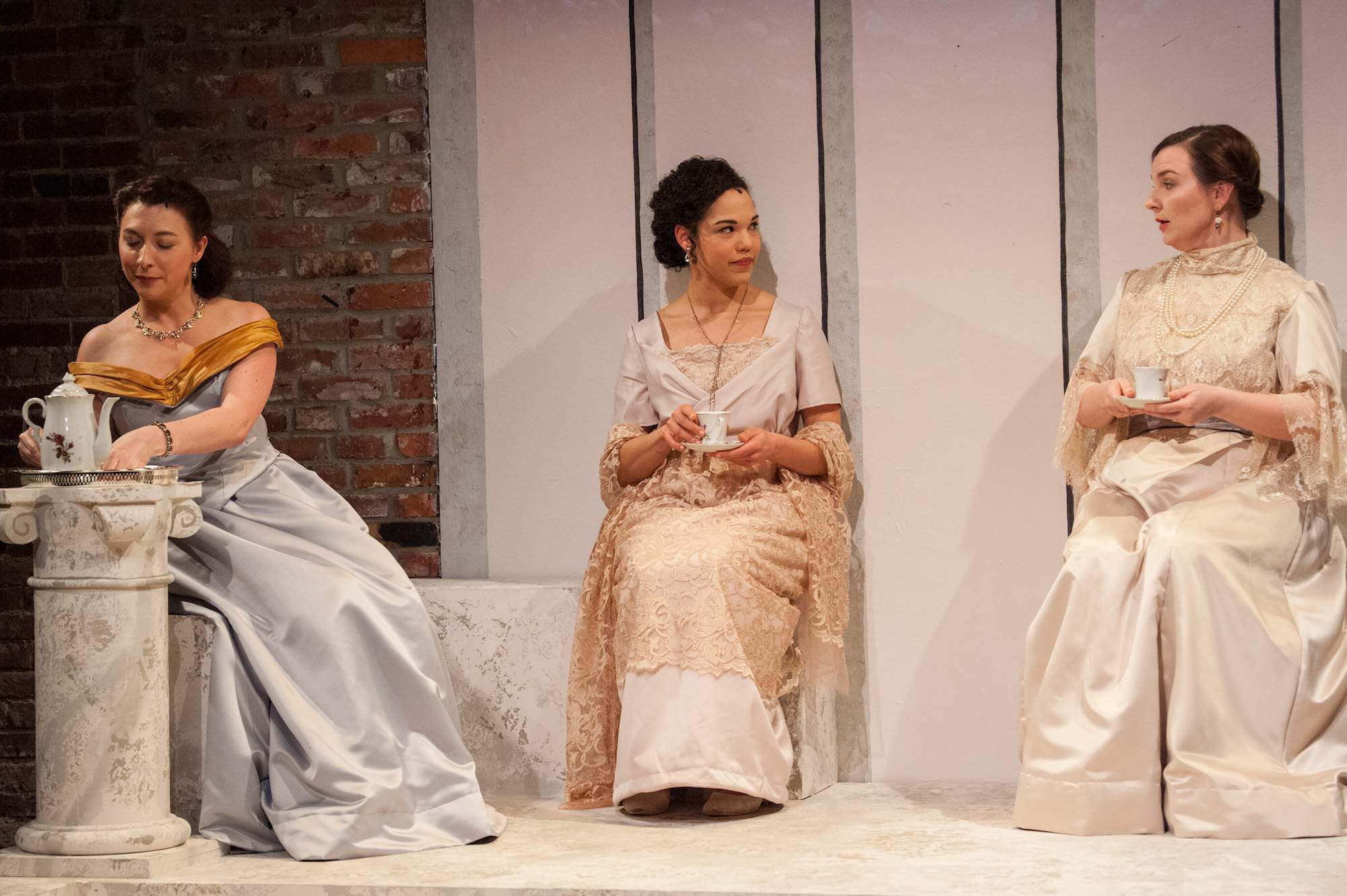
The Angel in the House
Don’t let the title fool you: Sara Porkalob’s new play attacks — gorily and gleefully — the restrictions of Victorian femininity. In this new production at Café Nordo, three seemingly demure drawing-room-comedy-type heroines (think “Wilde women gone wild”) seek revenge on the stuffed tuxedos who’ve wronged them — members, it turns out, of a shadowy patriarchal cabal who hide their loathsome motives and actions behind the pretense of idealizing women. The title comes from an actual English novel-in-verse from 1854 that helped establish saintly purity and nobility as the paradigms of womanhood in the Victorian mind — a pedestal that became a cage. Seattle theater upstart Porkalob is having none of it, and the juicy penny-dreadful melodrama of her script is reflected wittily in the accompanying dinner menu, from blood-red beet soup to breasts (of duck) tightly bound in a corset of Swiss chard. You just have two weekends left, and the show’s been selling briskly, so don’t hesitate to grab seats for one of the handful of remaining nights. –G.B.
If you go: The Angel in the House at Café Nordo, through March 15. ($84)
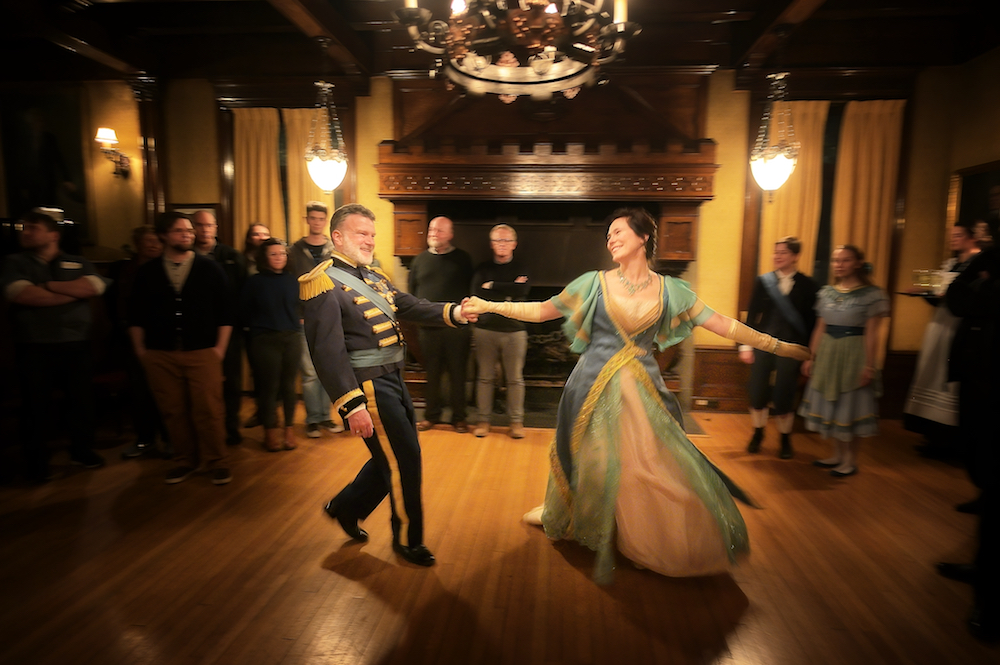
Last Days of the Tsars
“Immersive” theater can mean all kinds of things. But in the case of this new show, produced by the New York theater company Witness with a Seattle cast, it definitely means wear comfortable shoes. Staged inside the Stimson-Green Mansion, a luxurious First Hill landmark, this play about the demise of Russia’s Tsar Nicholas II and his clan unfolds on three floors, sometimes simultaneously. Your role is to clamber with fellow patrons up and down stairs, from majestic dining room to well-appointed library, from bedroom to basement, all while leaning in to catch what the doomed Romanovs and their conspiring enemies are up to.
Amid the rococo architectural trappings, Last Days of the Tsars is a distillation that takes liberties with what historians believe actually occurred in 1917, when the gently oblivious Tsar (thoughtfully played with calm, regal bearing by Frank Lawler), his elegant, anxious wife Alexandra (Tracy Hyland) and their adult and younger children were massacred by Bolshevik insurgents while in custody in a private residence. There’s a lot missing here about the circumstances of the world-shaking execution and the revolutionary turmoil that led up to it. The show instead elicits mostly sympathy for the richly attired and genteel Romanovs, particularly for their fragile young son Alexei and adolescent daughter Anastasia (sensitively played, respectively, by Sienna Mendez and the winsome Cheyenne Bilbrey). After the relations are slain (their brutal murders are heard, but not seen), the victims waft through the mansion as ashy ghosts, haunting their assassins long after the bloodshed’s been mopped up.
Scurrying from room to room, you’re just waiting for the inevitable as you eavesdrop on quiet chats and tag along after the glaring Rasputin (enacted by Arjun Pande, who bears an eerie resemblance to photos of the royals’ weird, wild-eyed guru). You may have to jostle to get close to the action, and not be privy to every conversation, but the gist of it comes through. And you’ll find chairs, window seats and chaise lounges here and there where you can catch your breath or take a break. (There’s also a tucked-away cash bar where you can replenish your glass of wine.)
The show stretches out its material (and perhaps one’s stamina), but it is handsomely produced and intriguing. It's also a rare chance to wander around the over-the-top-decorous, Tudor-style Stimson-Green abode — a grand example of how ultrarich Seattle moguls were living large back in the early 1900s. –M.B.
If you go: Last Days of the Tsars at Stimson-Green Mansion through March 22. ($49-$69)
Get the latest in local arts and culture
This weekly newsletter brings arts news and cultural events straight to your inbox.

